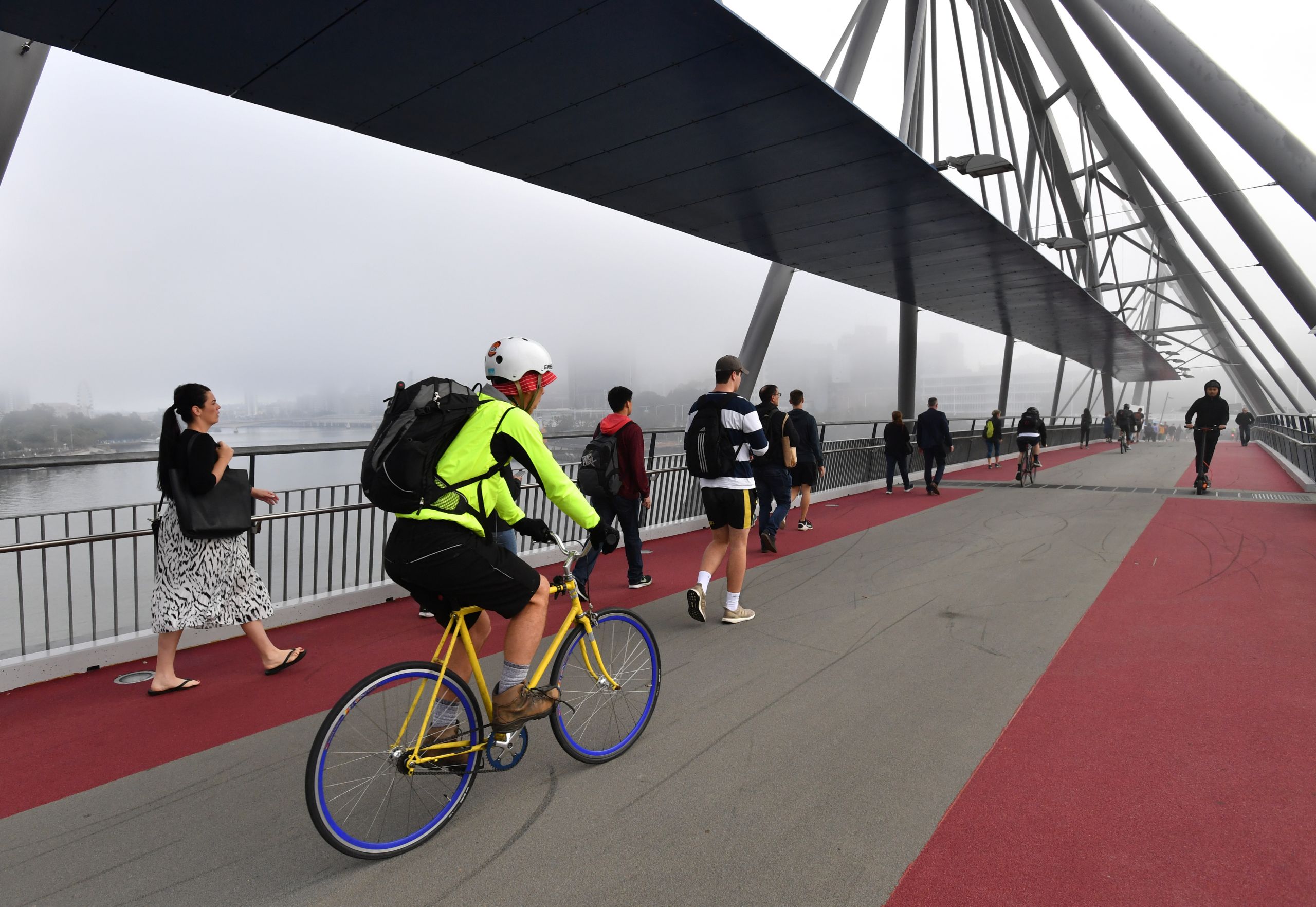The Statement
“Supporting cycling and pedestrian infrastructure means less cars on the road, reduced emissions and air pollution and has a proven impact on public health and wellbeing.”
NSW Labor’s transport spokeswoman Jodi McKay commits $412 million to build more cycleways and footpaths. February 23, 2019
The Analysis
NSW Labor’s transport spokeswoman Jodi McKay vowed to end the “war on cyclists” by spending $412 million on new bikeways and footpaths if Labor wins the March 23 state election.
AAP FactCheck has examined Ms McKay’s claims that building more cycleways and footpaths will lead to fewer cars on the road, less pollution, lower emissions and a boost to public health and wellbeing.
There are numerous studies supporting Ms McKay’s position on the benefits of building additional “active transport” infrastructure.
Other reports, however, show that while increasing cycleways and footpaths is great for city residents, there is a lesser impact in outer suburban, regional and rural areas where greater distances prohibit cycling and walking as a mode of transport.
A December 2018 study by New Zealand’s University of Otago and the Victoria University of Wellington found cycling and walking infrastructure reduced car use and carbon dioxide emissions.
In the three years after the development of the new infrastructure in two small NZ cities, there was a reduction of 1.6 per cent in vehicle kilometres travelled and an associated one per cent drop in carbon emissions, a report on the NZ study found.
New Plymouth and Hastings, the two cities in the study, were selected by the New Zealand government in 2011 as “walking and cycling model communities” and received grants of $NZ13.1 million ($A12.5 million).
A 2011 report by the Brussels-based European Cycling Federation (ECF), which tracked the environmental impact of cycling in Europe, found transport greenhouse gas emissions could be cut by more than 25 per cent if every country’s residents cycled as regularly as the Danes.
The study found the average Dane cycled almost 965km each year. If that rate was replicated across Europe the bloc would achieve up to 26 per cent of its targeted transport emissions reductions, depending on what forms of transport cycling replaced.
A 2011 study commissioned by the Queensland government found a number of economic and health benefits per kilometre walked or cycled. The benefits included decongestion and savings in health costs, vehicle operating costs, infrastructure and the environment.
Ms McKay’s claim that building more cycleways and footpaths helped boost public health and wellbeing was also supported by a number of studies, with the benefits of cycling outweighing any potential negative effects of air pollution and safety.
A 2017 British Medical Journal study found people who cycled to work had a 41 per cent lower risk of dying compared with commuting by car or public transport. Cyclists also had a 52 per cent lower risk of dying from heart disease and a 40 per cent lower risk of dying from cancer.
In 2016 scientists at Britain’s University of Cambridge and University of East Anglia who studied the risks of walking and cycling in varying levels of air pollution around the world found only the worst one per cent of polluted cities would reduce the health benefits of cycling.
Dr Marko Tainio from the University of Cambridge, who led the study, said: “Even in Delhi, one of the most polluted cities in the world, people would need to cycle over five hours per week before the pollution risks outweigh the health benefits.”
Dr Tainio’s findings were further supported by researchers from Columbia University which used personal monitoring devices to examine how air pollution affects cyclists’ health.
Other Australian studies and reports found the multi-pronged “active transport” approach (page 26) of creating more cycleways and footpaths, when combined with public transport, helped turn the dial in reducing traffic, pollution and emissions.
This multi-pronged approach was supported by government studies which found walking as a mode of transport was declining across Australia.
Other reports showed additional cycleways and footpaths had a lesser impact in areas where distances were too great to commute on bike or foot.
The Australian government’s 2013 Walking, Riding and Access to Public Transport ministerial statement acknowledged (page four) walking is rarely viable for distances greater than two kilometres, or 20 minutes, largely limiting it to being a method of transport for inner city populations.
However, inner city areas are likely to be inaccessible or inconvenient for cars due to parking and congestion issues, meaning people there are more inclined to commute by foot.
Inner city CBDs tend to have well-developed existing pedestrian infrastructure, therefore additional “active transport” infrastructure may not have as big an impact.
AAP FactCheck concludes Ms McKay correctly highlights the benefits of additional cycling and pedestrian infrastructure, however, the impacts may not be felt to the same extent in rural and regional centres.
The Verdict
Mostly True – Mostly accurate, but there is a minor error or problem.
First published February 26, 2019 17:45 AEDT


















